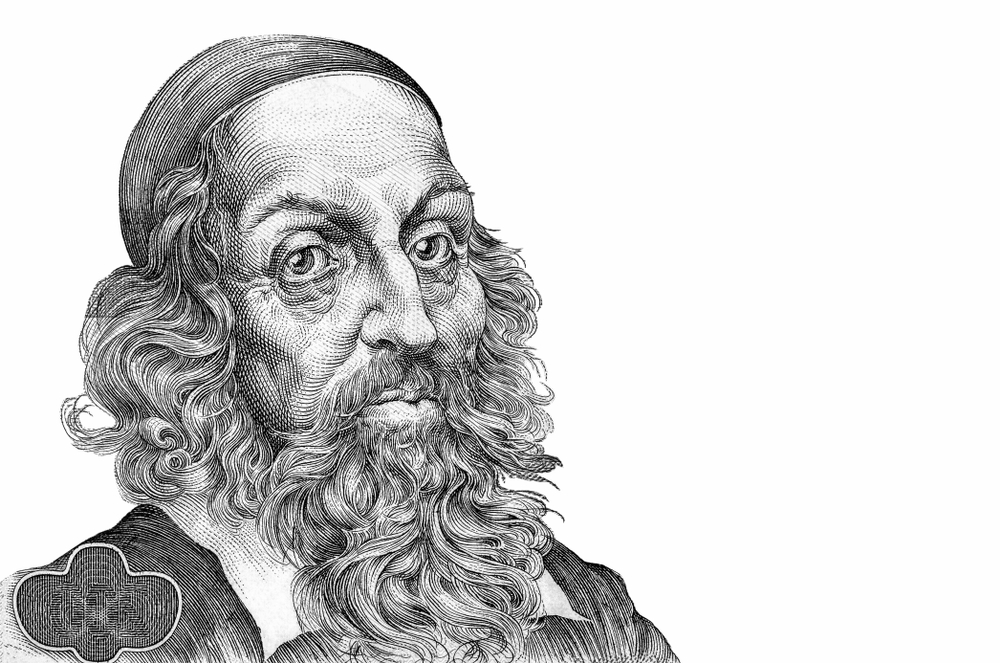John Amos Comenius was a bishop of the Protestant church, pedagogue and philosopher. He may also be referred to as a cosmopolitan; he was born in the territory of the present-day Czech Republic but he died in what is now the Netherlands. Who was he in reality, though? And thanks to what should we hold him in high esteem today, 350 years after his death?
Native Moravia
John Amos Comenius was born on 28 March 1592 as the youngest of five children. We do not know his exact birthplace. It was definitely in Eastern Moravia. Sources mention, for example, Uherský Brod (where you can find the John Amos Comenius Museum, which records both his work and chequered life story), Nivnice (he affixed Nivnický, Nivanus or Nivnicensis to his signature in some documents) or Komňa (his father’s family hailed from there and the name Comenius is undoubtedly derived from it). He was soon orphaned and lived with his aunt in Strážnice. At the age of 15, in 1608, he was sent to a school in the Moravian town of Přerov, which was supported by the then owner of the estate. The owner also took patronage over the Unity of the Brethren, which was one of the Protestant churches that was formed in what is nowadays the Czech Republic. These days, Přerov Chateau houses the Comenius Museum. Among other things, you can see displays of school classrooms from various periods or a memorial to John Amos Comenius there. Courtesy of his study achievements, the young John Amos was sent to German schools. He studied at the Herborn Academy and the University of Heidelberg.
Forced exile
After completing his studies, John Amos Comenius came back home to Moravia. He became rector of the Přerov school where he was a pupil himself years before. He was also ordained as a priest of the Unity of the Brethren, he got married and worked as a preacher and pastor in various Moravian towns such as Fulnek. The Unity of the Brethren chapel, one of the few places that had seen Comenius’s activities, is still situated there to this day; a permanent exhibition can be seen in the chapel where he preached. When he was nearly 30 years old the situation in the Kingdom of Bohemia changed and it was decreed that all the inhabitants had to enter the Roman Catholic Church again, or leave the country. So, John Amos Comenius went into hiding for a few years. At that time, he also had to cope with the death of his wife and two children in a plague epidemic. With a heavy heart he chose to emigrate in the end. In 1628 he left via what was then Poland into exile and he never returned home again.
Teacher of nations
Influenced by all the events in his life, John Amos Comenius began writing books. In exile he devoted himself to his theological, cartographical, philosophical and pedagogical work that aimed at reforming the entire world. He considered lifelong education and correct upbringing of children and youth as the only possible path for corrective reform. Thanks to that, he became a founder and pioneer of modern pedagogy. He had written many books that pointed out the need to change the approach to pupils. We are grateful to him to this day, for example, for the fact that all children go to school, which was not customary in his period. Or for the fact that children begin to be educated at around 6 years of age. He defined the concepts of the school year, school holidays and school week. He proposed that classes should include pupils of the same age and with the same level of knowledge. In short, he had devised and enforced what we have known to this day and what all of us now take for granted. He spread his knowledge as much as he could. He travelled all around Europe – from England, via Sweden to Hungary – and he tried to persuade everyone on his lecturing tours that emphasis should begin to be placed on children’s education. He finally settled in Amsterdam, where, among other things, he made friends with Rembrandt. He died on 15 November 1670.










-(1).jpg?width=1920&height=1204&ext=.jpg)